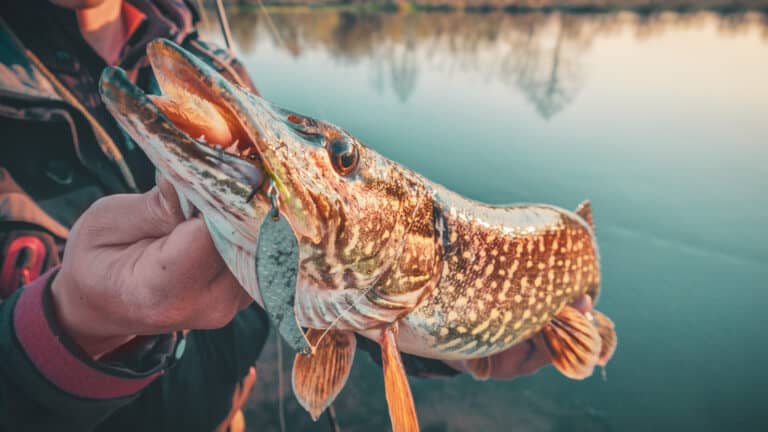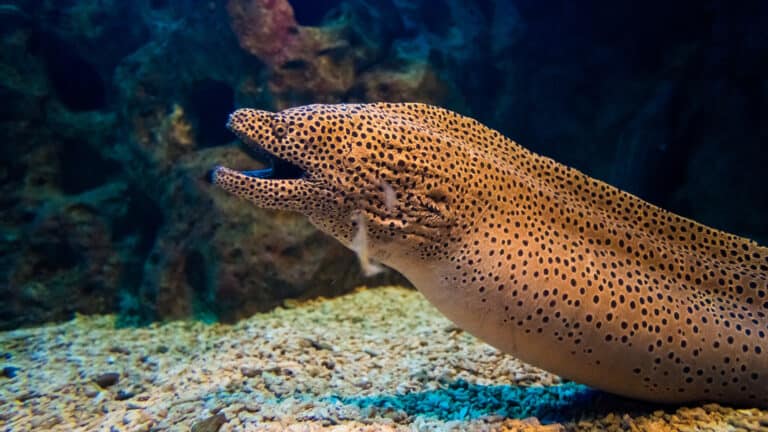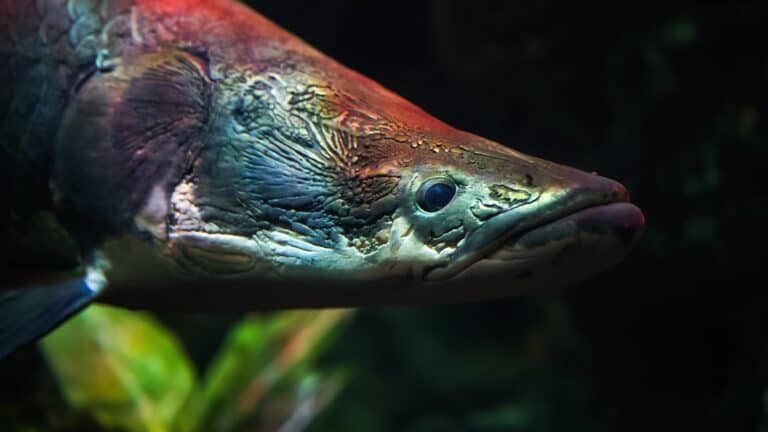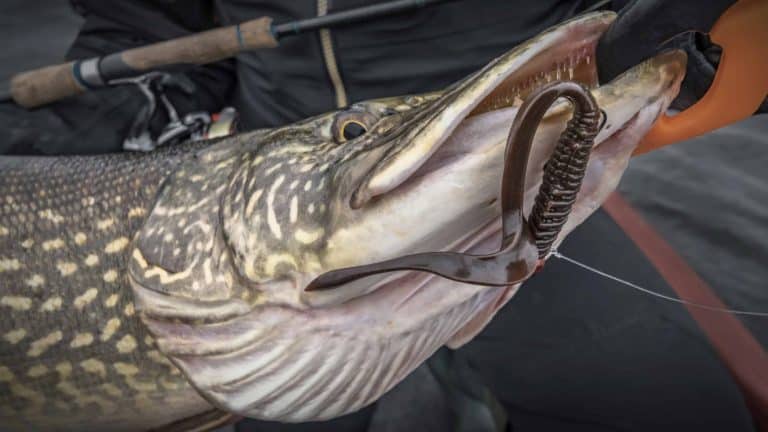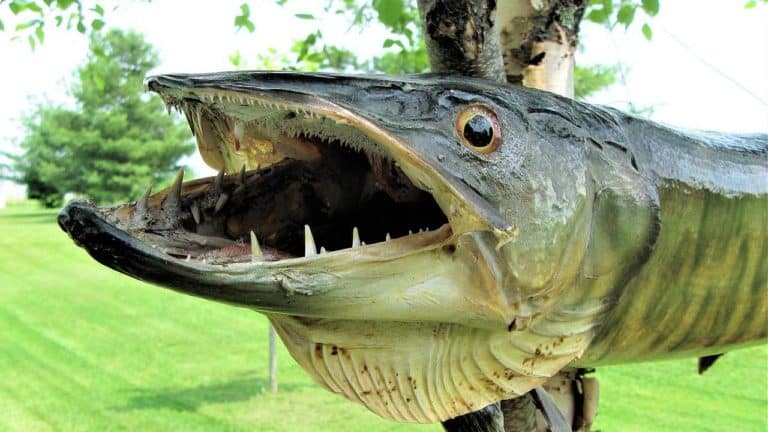How Big Do Catfish Grow – World Records 2023

Catfish get big. Seriously big. They are among the largest freshwater fish in the world. Catfish are prized by fishermen throughout the world for their size and fearsome reputation. They fight incredibly hard and over the years, some true monsters have been pulled from the depths. Some of the largest breeds of catfish include but aren’t limited to:
- Mekong Giant Catfish
- Piraiba
- Wels Catfish
- Giant Devil Catfish/Gonch
- Blue Catfish
- Red Tail Catfish
- Flathead Catfish
The largest confirmed catfish is a Mekong Giant Catfish that was caught in Thailand in 2005. This behemoth tipped the scales at a whopping 646lbs, making it the largest catfish ever recorded. However, there are many other catfish that have grown to freakish proportions. In this article, we’ll be covering the largest catfish species, along with their respective record weights.
The largest Catfish Species Ever Recorded
| Record Weight | Species | Location |
|---|---|---|
| 646lbs | Mekong Giant Catfish (Pangasianodon Gigas) | Northern Thailand |
| 341lbs 11oz | Piraiba (Brachyplatystoma Filamentosum) | Rio Solimoes, Brazil |
| 317lbs | Wels Catfish (Silurus Glanis) | Po Delta, Italy |
| 165lbs 5oz | Giant Devil Catfish/Goonch (Bagarius Yarrelli) | River Ramganga, India |
| 143lbs | Blue Catfish (Ictalurus Furcatus) | Kerr Lake, Virginia, USA |
| 123lbs 7oz | Red Tail Catfish ( Phractocephalus Hemioliopterus) | Amazon River, Brazil |
| 123lbs | Flathead Catfish (Pylodictis Olivaris) | Elk City Reservoir, Kansas, USA |
Mekong Giant Catfish – Pangasianodon Gigas

| Scientific Name | Max Weight | Max Length | Colour | Location |
|---|---|---|---|---|
| Pangasianodon Gigas | 650lbs | 300cm | White & Grey | Southeast Asia, China |
Mekong Giant Catfish are the largest catfish species in the world, with the largest recorded fish weighing in at 646lbs. Fortunately, the Mekong is a herbivore and predominantly eats plants and algae. They also don’t have teeth and due to their sheer size, they don’t have very many natural predators.
Mekong Giant Catfish are mainly found in Thailand and various other parts of Southeast Asia but they are critically endangered. The main reason for this is overfishing, these fish have nearly been fished to extinction. However, there are other factors like Dams, Habitat Destruction, & Navigation projects that threaten the population of the Mekong Giant Catfish. In order for us to see even larger and more impressive specimens in the future, the fishing of these catfish has to be closely regulated in order to prevent their population from dropping even further.
If you’re an eager fisherman and are tempted to try and catch one of these fish, you can visit places like Gillhams Fishing Resort in Thailand where there is a wide variety of large exotic fish that are stocked. The fish at this particular resort grow to monstrous sizes, with the largest Mekong Giant Catfish tipping the scales at over 300lbs.
Piraiba – Brachyplatystoma Filamentosum

| Scientific Name | Max Weight | Max Length | Colour | Location |
|---|---|---|---|---|
| Brachyplatystoma Filamentosum | 440lbs | 360cm | Grey & White | Amazon and Orinoco Rivers, North Eastern Brazil |
The Piraiba is another predatory catfish that can grow well over 400lbs. The interesting thing about this fish is how much it resembles a shark. It has a large, wide mouth, and a thick strong tail. The only thing it’s missing is a set of sharp teeth. Like most catfish, the Piraiaba doesn’t have teeth but a set of sharp rasping pads designed to catch small fish.
Like the Wels Catfish, the Piraiba is an omnivore and predominantly consumes fish. However, as is the case with the Wels, Piraiba will eat almost anything. There have been reports of monkeys, birds, cats, dogs other catfish, and even people being found inside their stomachs. The Piraiba is a catfish that becomes truly terrifying once it reaches a certain size. This fish was really made quite famous by River Monsters, in which Jeremy Wade pulls a 250lb specimen from the depths, proving once and for all, that these fish can grow to sizes where they could potentially be dangerous to humans.
Wels Catfish – Silurus Glanis

| Scientific Name | Max Weight | Max Length | Colour | Location |
|---|---|---|---|---|
| Silurus Glanis | 600lbs | 460cm | Green, Yellow, White, & Grey | Central, Southern, & Eastern Europe |
The Wels Catfish is the closest thing we have in this world to the loch ness monster. This creature is truly enormous but we don’t actually know how large these fish could grow. Theoretically, Wels could grow to be just as large as a Mekong Giant Catfish or even larger. The only thing that would stop them is a shortage of food supply. However, unlike the Mekong, which is strictly a herbivore, the Wels is an omnivore. It’s actually both a scavenger and a predator and on top of this, they will basically eat anything.
Nothing is really off the menu for Wels, not even other Wels Catfish! These fish have a reputation for being incredibly aggressive feeders, eating basically anything that they can swallow. There have even been reports of Wels Catfish attacking people and swallowing small children. If you want to catch a monster Wels, your best bet would be the Ebro River in Spain. Hypothetically, the Wels could grow to over 600lbs, however, in reality, the largest recorded specimen is a mere 317lbs. This fish was caught from the Po Delta River in Italy by Dino Ferrari.
Giant Devil Catfish/Goonch – Bagarius Yarrelli

| Scientific Name | Max Weight | Max Length | Colour | Location |
|---|---|---|---|---|
| Bagarius Yarrelli | 230lbs | 200cm | Brown, Grey, & Yellow | Northern India, Nepal |
While the Goonch isn’t the largest fish on this list, it certainly is the scariest. With razor-sharp teeth and an alleged appetite for human flesh, the Goonch or Giant Devil Catfish is truly the stuff of nightmares. The Goonch can supposedly surpass 200lbs which would make it large enough to be a genuine threat to people.
This fish is found mainly in North India and Nepal and its reputation as a man-eater has quite an interesting origin. It apparently developed this taste for people over time because of the fire ceremonies at the river banks in India.
Particularly funerals, where bodies are lit aflame before being sent into the river on a raft. This led to half-charred remains being consumed by the Goonch and thus led to them developing a taste for humans. After this, the Goonch reportedly started attacking people with those teeth I’m sure it would have no problem inflicting serious wounds or worse. However, the Goonch predominantly consumes fish in its natural habitat.
Blue Catfish – Ictalurus Furcatus
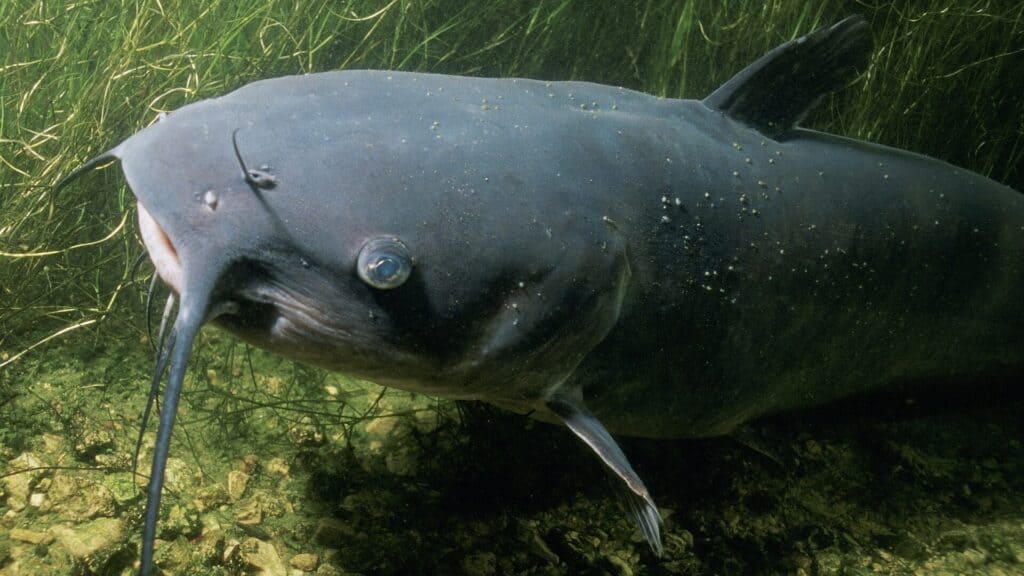
| Scientific Name | Max Weight | Max Length | Colour | Location |
|---|---|---|---|---|
| Ictalurus Furcatus | 150lb | 165cm | Blue, Grey, White | North America |
Blue Catfish are the largest catfish species in North America. It is closely related to the Channel & Flathead Catfish. These fish grow well over a 100lbs and like many other catfish will eat just about anything. The largest Blue Catfish ever recorded was 143lbs but they can apparently grow larger.
A lot of Americans, particularly those from the south, like to catch these fish using a technique called noodling. This involves sticking your hand into a hole and feeling around for a catfish. Once you find the catfish, you’ll know about it because it will bite! However, the fishermen were protective gloves in order to prevent the catfish’s rasping pads from cutting their hands. Once the catfish is latched on, they simply pull it out of the water. You can also effectively catch Blue Catfish with a traditional rod and reel.
Red Tail Catfish – Phractocephalus Hemioliopterus

| Scientific Name | Max Weight | Max Length | Colour | Location |
|---|---|---|---|---|
| Phractocephalus Hemioliopterus | 180lbs | 150cm | Brown, Yellow, White, & Red | Brazil |
The Red Tail Catfish is another large Catfish species that can be found in Amazon. It has a large bony head and a gaping wide mouth, similar to that of a Piraiba. However, while the Piraiba can grow over 400lbs, the largest Red Tail Catfish ever recorded was only 123lbs 7oz but many people speculate that they can grow as large as 180lbs.
What’s particularly interesting about the Red Tail Catfish is its colourations. Their tails and fins are pink/light red but the upper half of their bodies are a leathery speckled brown. Their bellies however are white with streaks of yellow often being prevalent throughout their midsections. While the Red Tail Catfish may not be the largest catfish in the world, it is one of the most interesting.
Flathead Catfish – Pylodictis Olivaris

| Scientific Name | Max Weight | Max Length | Colour | Location |
|---|---|---|---|---|
| Pylodictis Olivaris | 130lbs | 160cm | Brown, Yellow | North America |
Flathead Catfish are the second largest catfish species in America behind the Blue Catfish. They are easy to identify since they are brown/yellow in colour. The largest recorded Flathead was a 123lbs which is as big as they get. Like Blue & Channel Catfish, Flatheads aren’t picky and will consume anything they fit through their gullet. One of the best baits for Flathead Catfish is Spam or really any kind of processed meat. This is because its oily, fatty, and pungent, which is highly attractive to these fish.
FAQs
Can catfish get big enough to be dangerous to humans? – There have been many rumors of catfish eating people but often there are more reasonable explanations for these phenomena. However, there have been some genuine cases over the years of people getting attacked and eaten by specific breeds of catfish. These breeds include the monstrous Piriaba, Goonch, & Wels Catfish.
Why do catfish get so big? – One of the main reasons catfish get so big is that they will eat almost anything! During the summers, they tend to feed very aggressively and put on lots of weight.
Are catfish the largest freshwater fish? – The Mekong Giant Catfish is definitely up there but the title for the largest freshwater fish goes to the Giant Freshwater Stingray.
Do all catfish grow so large? No, some catfish species are quite tiny. For instance the Candiru, a small blood-sucking parasitic catfish made notorious for burrowing in urethras.

